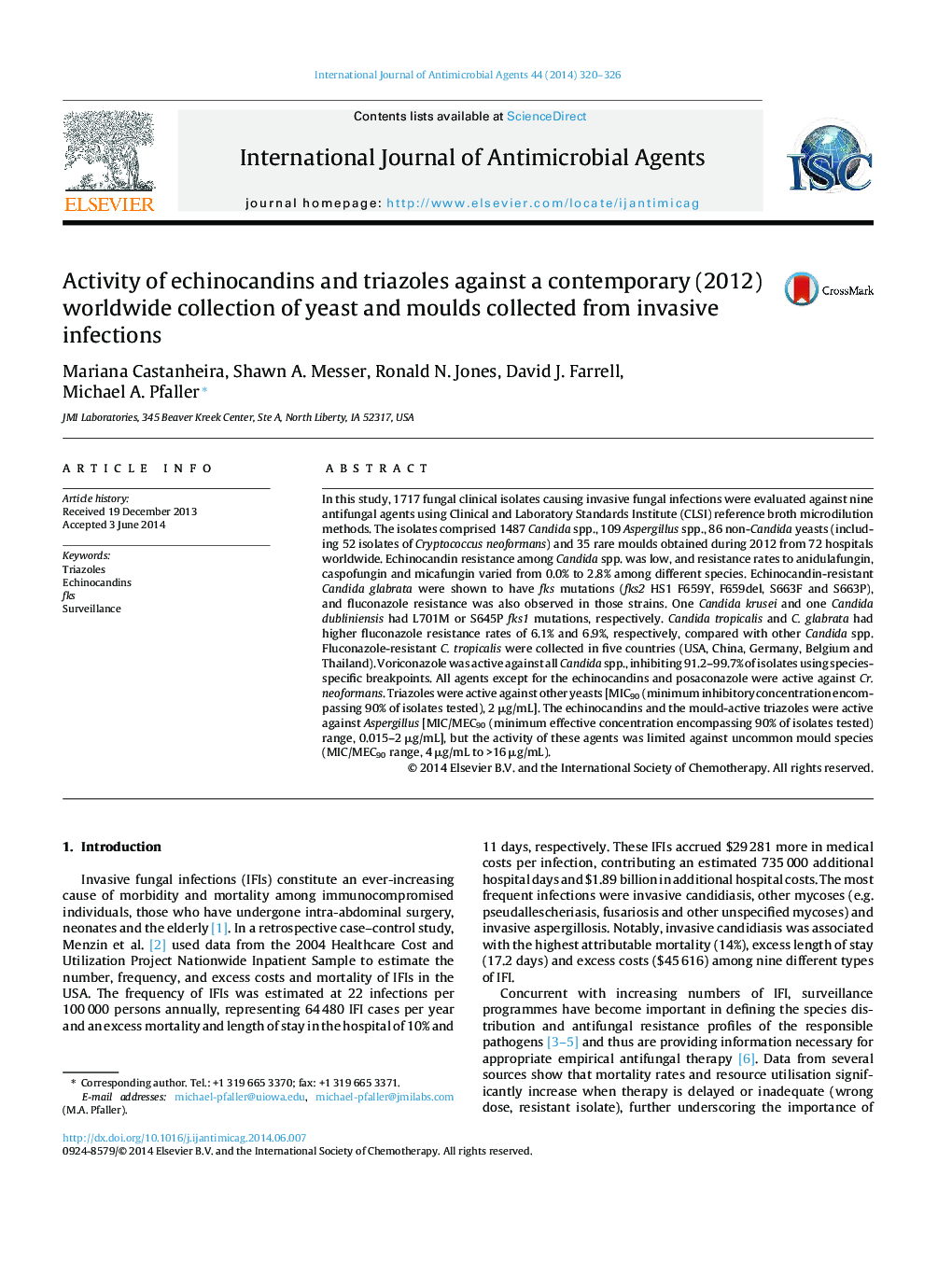| کد مقاله | کد نشریه | سال انتشار | مقاله انگلیسی | نسخه تمام متن |
|---|---|---|---|---|
| 6117915 | 1591776 | 2014 | 7 صفحه PDF | دانلود رایگان |
عنوان انگلیسی مقاله ISI
Activity of echinocandins and triazoles against a contemporary (2012) worldwide collection of yeast and moulds collected from invasive infections
ترجمه فارسی عنوان
فعالیت اکینوکندین ها و تریاازول ها در برابر مجموعه ی جهانی معاصر (2012) مخمر و قالب های جمع آوری شده از عفونت های مهاجم
دانلود مقاله + سفارش ترجمه
دانلود مقاله ISI انگلیسی
رایگان برای ایرانیان
موضوعات مرتبط
علوم زیستی و بیوفناوری
ایمنی شناسی و میکروب شناسی
میکروبیولوژی و بیوتکنولوژی کاربردی
چکیده انگلیسی
In this study, 1717 fungal clinical isolates causing invasive fungal infections were evaluated against nine antifungal agents using Clinical and Laboratory Standards Institute (CLSI) reference broth microdilution methods. The isolates comprised 1487 Candida spp., 109 Aspergillus spp., 86 non-Candida yeasts (including 52 isolates of Cryptococcus neoformans) and 35 rare moulds obtained during 2012 from 72 hospitals worldwide. Echinocandin resistance among Candida spp. was low, and resistance rates to anidulafungin, caspofungin and micafungin varied from 0.0% to 2.8% among different species. Echinocandin-resistant Candida glabrata were shown to have fks mutations (fks2 HS1 F659Y, F659del, S663F and S663P), and fluconazole resistance was also observed in those strains. One Candida krusei and one Candida dubliniensis had L701M or S645P fks1 mutations, respectively. Candida tropicalis and C. glabrata had higher fluconazole resistance rates of 6.1% and 6.9%, respectively, compared with other Candida spp. Fluconazole-resistant C. tropicalis were collected in five countries (USA, China, Germany, Belgium and Thailand). Voriconazole was active against all Candida spp., inhibiting 91.2-99.7% of isolates using species-specific breakpoints. All agents except for the echinocandins and posaconazole were active against Cr. neoformans. Triazoles were active against other yeasts [MIC90 (minimum inhibitory concentration encompassing 90% of isolates tested), 2 μg/mL]. The echinocandins and the mould-active triazoles were active against Aspergillus [MIC/MEC90 (minimum effective concentration encompassing 90% of isolates tested) range, 0.015-2 μg/mL], but the activity of these agents was limited against uncommon mould species (MIC/MEC90 range, 4 μg/mL to >16 μg/mL).
ناشر
Database: Elsevier - ScienceDirect (ساینس دایرکت)
Journal: International Journal of Antimicrobial Agents - Volume 44, Issue 4, October 2014, Pages 320-326
Journal: International Journal of Antimicrobial Agents - Volume 44, Issue 4, October 2014, Pages 320-326
نویسندگان
Mariana Castanheira, Shawn A. Messer, Ronald N. Jones, David J. Farrell, Michael A. Pfaller,
